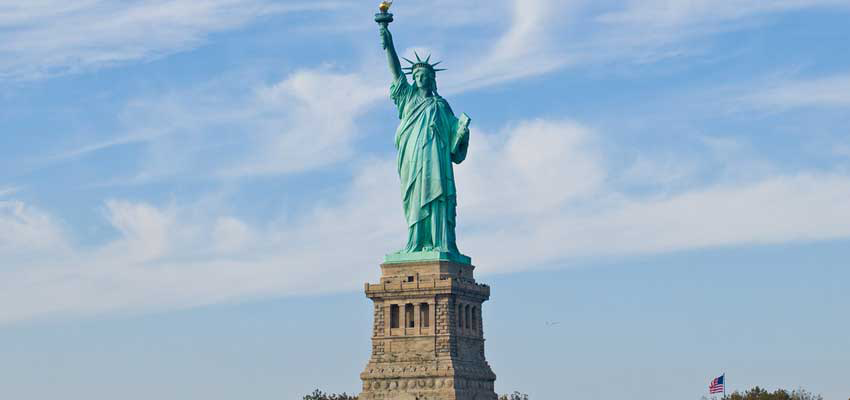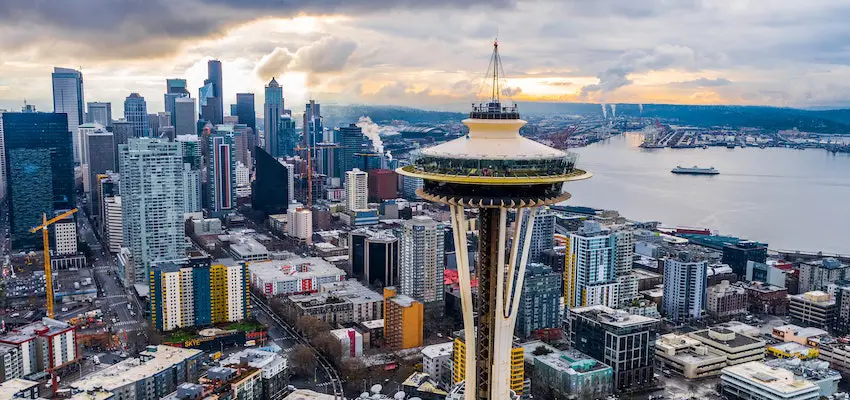The family remains central to US society, and more than half of unmarried adults between the ages of 18 and 24 still live with their parents. Even so, the American family has changed considerably in recent decades. Today only about one-quarter of all households consist of a traditional nuclear family, and more than half of all households have no children. One out of every four children is born out of wedlock, and there has been a large increase in the number of single-parent families.
A major percentage of all working Americans are women. In many households where both the husband and wife work outside the home, men are expected to share household duties. Men have also been playing an increasing role in raising their children. With both parents working, the use of, and need for, day care facilities are increasing; this is especially true for single-parent families. Among the growing proportion of the elderly population, many prefer to live in their own homes and maintain their independence. Those who cannot care for themselves may live in retirement communities or other institutions, or with their adult children. However, extended families are not common in the US. The US family is more mobile than in many other societies. It is common to move from one region of the country to another for education, employment, or simply a change of climate and scenery. Some people may move 15 times or more during a lifetime. Although many couples choose to live together before, or instead of, marriage, the marriage rate is one of the highest in western societies-but the divorce rate is also the world's highest. Weddings vary in style according to religion, region, ethnic origins, and wealth. Both religious and secular people may be legally authorized to perform weddings. The average age for marriage is 26 for men and 24 for women.
Eating styles and habits vary between people of different backgrounds, but Americans generally eat with the fork in the hand with which they write. A knife is used for cutting and spreading; otherwise, it is laid on the plate or table. Fast foods, such as chips, fried chicken, hamburgers, pizza, and tacos, tend to be eaten with the fingers. In general, table manners are casual, although it is traditionally considered impolite to rest elbows on the table. There is a significant difference between what people may do at home or in a fast-food restaurant, and how they act in a more formal restaurant. Because both parents often work outside the home, some Americans are less likely to sit down as a family to eat once the children are older and able to prepare their own food or serve themselves.
Both men and women usually smile and shake hands when greeting. Good friends and family members may embrace when they meet, especially after a long absence. In casual situations, a wave may be used instead of a handshake. Americans may greet strangers on the street by saying "Hello" or "Good morning", although they may pass without any greeting. Among young people, verbal greetings or various hand-slapping gestures, such as the "high five", are common. Except in formal situations, people usually address one another by their first names once they are acquainted, and often do so on first meeting. Combining a title (such as "Mrs.", "Dr.", or "Ms.") with a family name shows respect. When greeting someone for the first time, Americans commonly say, "Pleased to meet you" or "How do you do?". A simple "Hello" or "Hi" is also common. There are regional variations such as "Aloha" in Hawaii or "Howdy" in parts of the West. Friends often greet each other with "How are you?" and respond "Fine, thanks". Americans do not usually expect any further answer to the question unless there is a close relationship.
Americans do not generally stand very close to each other when conversing, keeping about arm's length apart. However, they may spontaneously touch one another on the arm or shoulder during conversation. It is common for couples to hold hands or show affection in public. When sitting, both men and women are often casual when circumstances allow, and they may prop their feet up on chairs or place the ankle of one leg on the knee of the other. In more formal settings, however, it is often considered inappropriate to slouch or be too casual in demeanor.
Visiting friends, family, and acquaintances plays a big part of social life in the United States, and people will travel long distances by car, bus, train, or airplane to do so. People are generally expected to be on time for appointments or when they are invited to someone's home. However, if a guest is late, Americans will rarely take offence if the visitor has called in advance to inform them of the delay. In general, the emphasis during visits is on informality. Guests are expected to feel comfortable, to sit where they like, and to enjoy themselves. It usually does not cause offence if a guest refuses refreshments. Gifts are not expected when visiting, but many guests bring flowers or wine when invited for a meal. Close friends may offer, or be asked, to bring an item of food to serve with the meal.
Baseball, basketball, American football, and ice hockey are the most popular spectator and participation sports, but Americans enjoy an enormous range of activities, including soccer, cycling, racket-ball (a hybrid of squash and handball), tennis, swimming, golf, bowling, martial arts, walking, jogging, and aerobic exercise. Schools, cities, and other organizations sponsor team sports for the young, and professional sports are an important part of the culture. In general, most Americans spend a large amount of their leisure time socializing or watching television. Other leisure activities include going to the cinema or concerts, picnicking, and traveling. Many Americans volunteer for a wide range of causes, from raising funds to help those who are less fortunate to tutoring students or leading Scout troops and youth sports. Even city dwellers enjoy spending time in the "great outdoors", camping, hiking, or hunting.
National holidays in January include New Year's Day (1 January) and the birthday of Martin Luther King Jr. This holiday, which is observed on the third Monday in January, honors the civil rights leader who was assassinated in 1968. Because Abraham Lincoln's birthday is on 12 February and George Washington's birthday is on 22 February, Americans honor these two presidents, and others, on Presidents' Day, which occurs the third Monday in February.
Many Americans celebrate Easter (in either March or April) by going to church and getting together with their family and friends. Children often go on Easter-egg hunts to search for hidden dyed eggs and other treats. Memorial Day is observed on the last Monday in May. It honors those who have given up their lives in defense of their country during wartime. The Fourth of July is celebrated with fireworks, picnics, and outdoor barbecues. Also known as Independence Day, this holiday celebrates the signing of the Declaration of Independence in 1776, when the American colonies separated from Great Britain and formed the US.
On the first Monday in September, many Americans take a day off work to mark Labor Day. Trade unions initiated this holiday to commemorate the achievement of improved labor conditions and a shorter working day. Columbus Day (honoring the landing of Christopher Columbus in the New World on 12 October 1492) is now observed on the second Monday in October, although in recent years Native Americans and others have protested against the celebration of this day. Veterans' Day (11 November) honors those who gave their lives for their country during World Wars I and II. On the fourth Thursday of November, Americans celebrate Thanksgiving. The origin of this holiday is associated with the Pilgrims, who settled in New England in the early 1600s and shared a feast with members of the indigenous Wampanoag people. These days, Thanksgiving is celebrated by sharing an elaborate dinner, often including turkey and several other dishes, with family and friends.
The Christmas season often begins the day after Thanksgiving. Many people take this day off work to begin their Christmas shopping. During the month of December, Americans traditionally decorate their homes with a Christmas tree, colorful lights, and wreaths. They send greetings cards to their friends and family, sing Christmas carols, and shop for gifts. On Christmas Eve (24 December), children traditionally hang stockings by the fireplace for Santa Claus, whom they believe will come down the chimney during the night and leave presents for them. Christmas Day (25 December) is celebrated as both a religious and secular holiday. Many Americans who are practicing Christians go to church on this day to honor the birth of Jesus. Many Americans also celebrate Christmas by joining their family or friends to exchange gifts, share a meal, drink egg-nog, and observe other traditions, which may vary according to region or family heritage.
There are also special days that, while not official holidays, are still widely observed. Groundhog Day (2 February) is a rural tradition that claims if a groundhog emerges from its burrow on that day and sees its shadow, it will go back inside and there will be six more weeks of winter. On Saint Valentine's Day (14 February), sweethearts and friends give each other greetings cards, flowers, and chocolates to show their affection. Saint Patrick's Day (17 March), the feast day of the Irish patron saint, is celebrated by Irish Americans with parades, parties, and the wearing of the color green. Mothers' Day (the second Sunday in May) and Fathers' Day (the third Sunday in June) are days for children to give greetings cards and gifts to their parents, and to perhaps prepare them a special meal, or help around the house. Flag Day (14 June) celebrates the adoption of the US flag in 1777. Halloween (31 October) has its roots in ancient British autumn festivals for warding off evil spirits and celebrating the harvest; in the US it is a night for children to dress up, often as ghosts or witches, and go from door to door asking for sweets.
Many Jewish people in the US observe the High Holy Days, which begin in September or October (according to the lunar calendar) with Rosh Hashanah (New Year) and end with Yom Kippur (Day of Atonement), a day of confession, repentance, and prayers for the forgiveness of sins committed during the year. Hanukkah, also known as the Festival of Lights, is celebrated in December by many Jews. Gifts are exchanged and a special ceremony is conducted around a candelabrum, called a menorah, with nine candles. The number of candles lit each day corresponds to the particular day of the eight day festival-for example, five candles are lit on the fifth day. The ninth candle is used to light the others. While the candles burn, songs are sung and games are played.
The main holiday months are from June to early September, when the schools take their summer break. Many US workers get only two weeks of paid holiday a year, much less than most Europeans.




